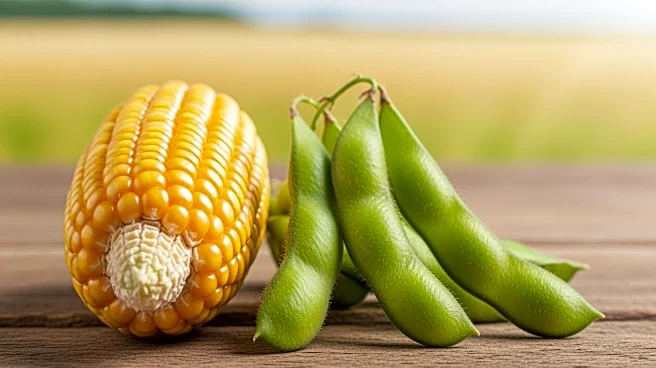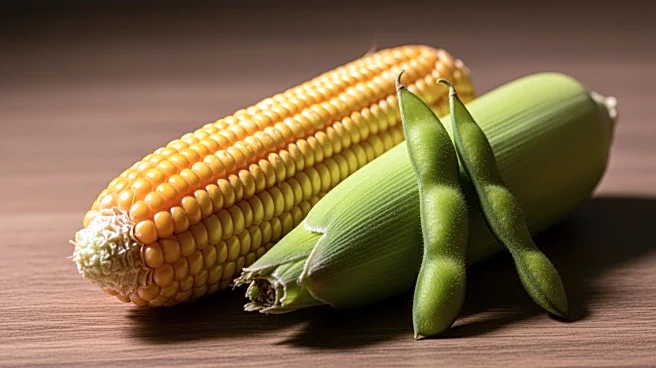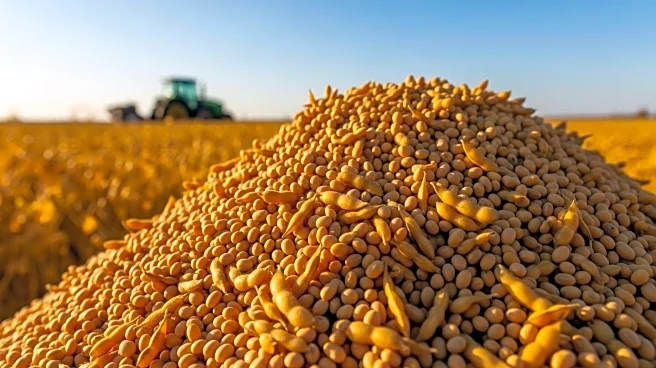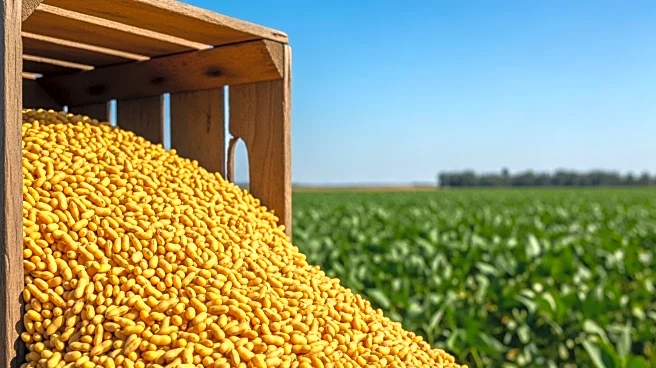What's Happening?
As of October 16, 2025, corn and soybean futures experienced an upward trend, with December corn futures closing at $4.21¾ per bushel and November soybeans at $10.10¾ per bushel. This increase marks a continuation of a three-day rise for corn, driven
by technical buying and strong support levels. Soybeans also saw gains due to rising Brazilian basis levels and expectations of sustained demand from China. Wheat futures showed mixed results, with December CBOT wheat slightly up, while December KC and Minneapolis wheat experienced minor declines. Market analysts, including Naomi Blohm from Total Farm Marketing, suggest that corn and soybean futures may trade in a lackluster pattern until more information on yield is available.
Why It's Important?
The rise in corn and soybean futures is significant for U.S. agriculture, as it reflects market optimism and potential demand from international buyers, particularly China. The increase in futures prices can benefit U.S. farmers by potentially leading to higher revenues. However, the market remains cautious, with analysts highlighting the importance of yield data and trade deals, especially with China, which could further influence prices. The mixed performance of wheat futures indicates variability in market conditions, which could impact planning and investment decisions in the agricultural sector.
What's Next?
Market participants are closely monitoring yield reports and potential trade agreements, particularly with China, which could significantly impact future pricing and demand. Analysts suggest that if corn yields drop below 180 bushels per acre, it could drastically affect U.S. and global balance sheets, leading to further price changes. Similarly, soybean prices could be supported by yields closer to 51 bushels per acre and any positive trade developments. Stakeholders in the agricultural industry are likely to adjust their strategies based on these evolving factors.
Beyond the Headlines
The current market trends in corn and soybean futures may have broader implications for global food security and trade dynamics. The reliance on yield data and international trade agreements underscores the interconnectedness of global agricultural markets. Additionally, the focus on technical buying and basis levels highlights the complexity of market operations and the influence of external factors such as weather and geopolitical developments.













